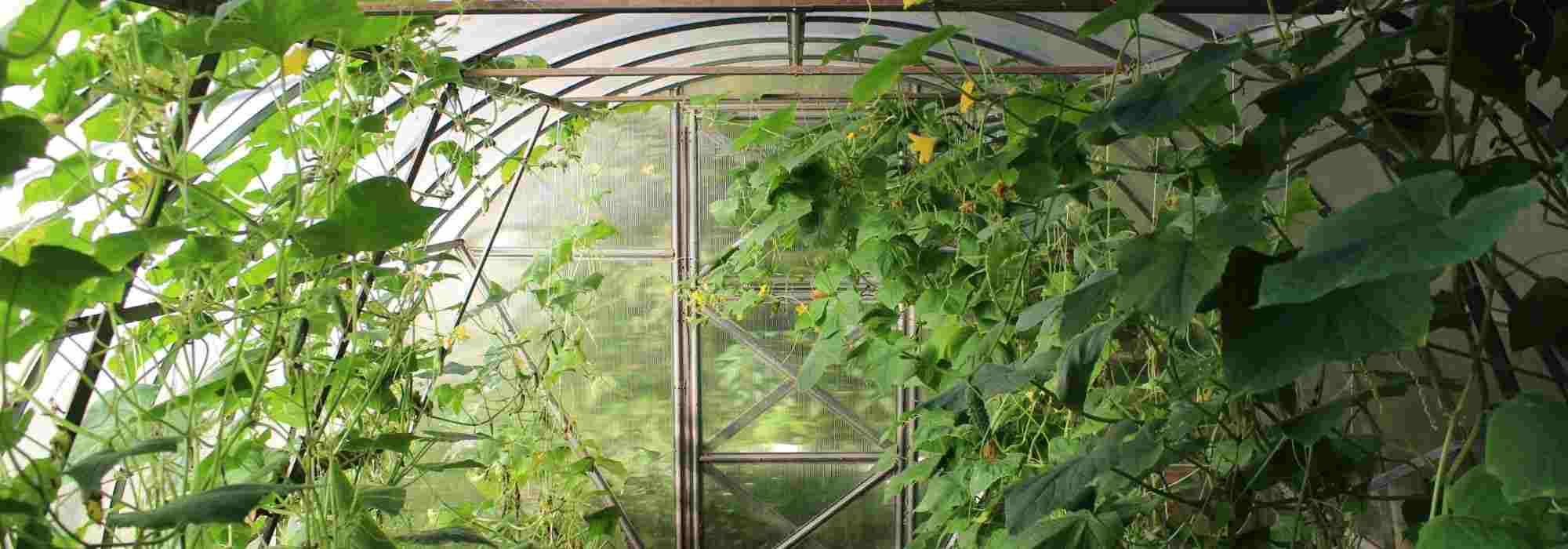
Controlling diseases and pests in greenhouses
Our tips to prevent them
Contents
In a garden greenhouse, the confined environment tends to facilitate the emergence of pests and diseases. Once established, they will tend to spread much more quickly than outdoors, requiring almost daily vigilance from the gardener, especially during the growing season.
Poor watering techniques, lack of ventilation, or an unbalanced ecosystem are all factors that promote the presence and development of unwanted pests.
Here are our tips for preventing and managing pest and disease attacks in a greenhouse!
The right watering technique to minimise the risk of diseases
Growing plants in a garden greenhouse can help sensitive plants, such as the tomato with downy mildew, to be less susceptible to fungal diseases. Among the most common, we can add powdery mildew, rust, and botrytis (grey mould). Salads, squashes, melons, and cucurbits are also plants that can be affected.
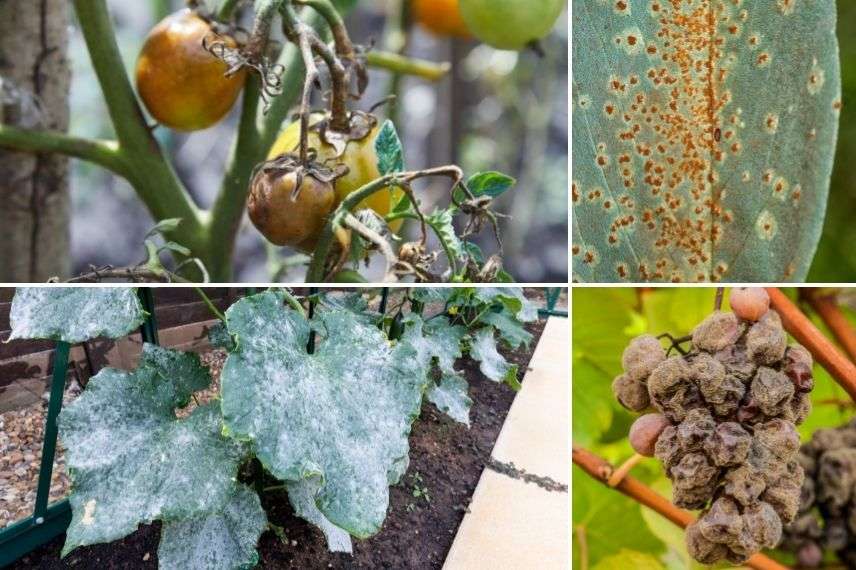
Above: downy mildew and rust; below: powdery mildew and botrytis
Indeed, these diseases often result from a combination of rain and sunshine, creating a humidity + heat cocktail that is favourable for the development of fungi. If plants in the greenhouse are protected from rain wetting their foliage, it is important to ensure that you choose the right watering system.
To limit the development of diseases, opt for manual watering directly at the base of the plants or for an automatic watering system that provides a gentle and regular flow without ever touching the foliage (drip irrigation, porous hose). You can also choose a bottom irrigation system, via capillary matting or irrigation table.
Conversely, avoid watering with a spray system, which wets all the plants and should be reserved for tropical crops and/or those whose foliage needs to be regularly humidified.
The warm environment in a greenhouse tends to lead to quicker dehydration of crops and a lack of water. Plants are then weakened and less able to resist diseases. Therefore, favour moderate but regular watering.
This frequent watering will also help combat other types of diseases in the greenhouse, such as blossom end rot affecting tomatoes or fruit splitting.
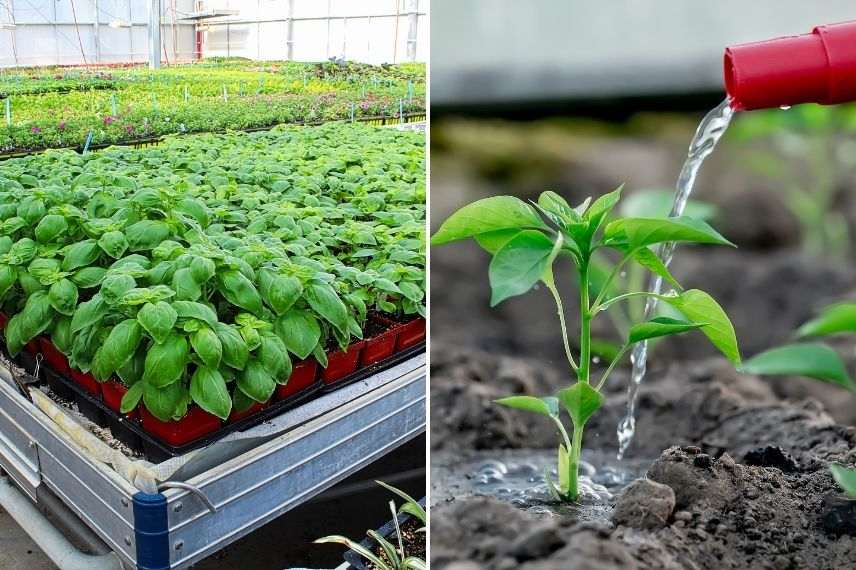
Irrigation tables allow for plant hydration through capillarity. For disease prevention, prefer manual watering at the base of the plants.
Effective ventilation in the greenhouse
Many pests appear and thrive due to the warm and dry atmosphere that prevails in greenhouses: mealybugs, red spider mites, whiteflies (whitefly).
These unwanted guests fear cool and humid environments. Good ventilation is therefore essential to refresh the air, regulate the ambient temperature, and prevent their appearance. Open frames, doors, and vents daily, especially during the summer months.
Conversely, ventilation will also prevent the stagnation of an overly humid environment, which brings a lot of condensation and is more favourable to the development of diseases.
As an additional preventive measure or in case of light infestation, regular sprays of rainwater on plants that are not susceptible to fungal diseases can generally suffice. If a plant is affected, do not hesitate to take it outside on a cool, rainy day.
Good ventilation should also be established between the plants themselves, which ideally should not touch each other too much. Avoid planting too densely and encourage air circulation.
Finally, ensure that your greenhouse is kept clean, regularly remove damaged parts of plants (leaves, stems, etc.), and clean cutting tools after each pruning, using alcohol or black soap.
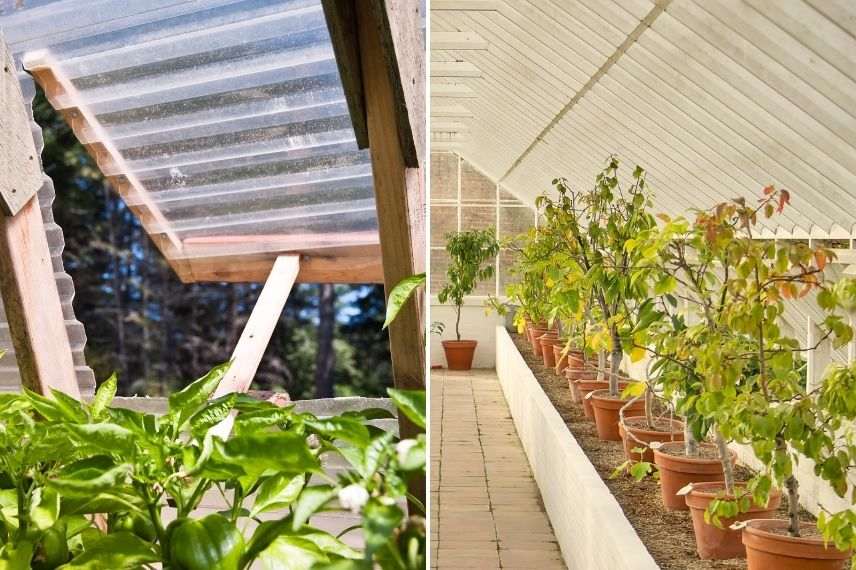
Ventilate your greenhouse to allow air circulation and space your plants.
Healthy and vigorous plants, regularly monitored
Growing healthy plants naturally helps combat the appearance of pests and diseases. More resilient, they will be less susceptible.
In garden centres, look for vigorous young plants or, if possible, opt for sowing seeds or purchasing small plants in plug plants.
Choose healthy, balanced, and nutrient-rich substrates that will nourish the plants well and make them more robust. Amend but do so sparingly, limiting the addition of fertilisers and nitrogen, which often encourage the presence of pests like aphids.
Practice crop rotation: avoid growing plants from the same family in the same spot for two consecutive years. The soil loses its nutrients and becomes depleted over time. If this is not possible, opt for pot cultivation.
Finally, regular monitoring and observation of plants in the greenhouse often allow for quick intervention against the emergence of pests and diseases, without adversely affecting the crops. A few aphids or scale insects can thus be easily removed by hand, and a contaminated leaf can be promptly removed before it has the chance to infect its neighbours.
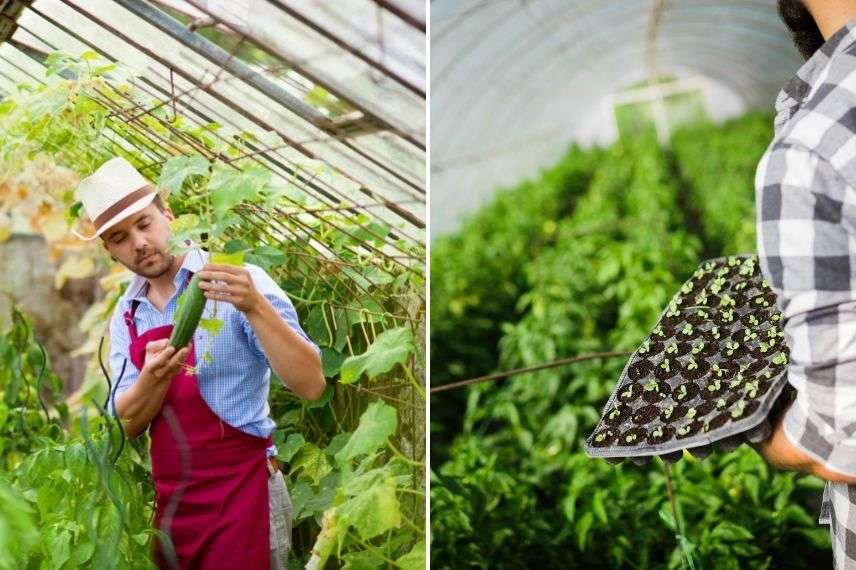
Regularly monitor your plants in the greenhouse. Preferably buy your young plants in plug plants.
Read also
How to manage watering in a greenhouse?A balanced ecosystem to prevent the emergence of diseases and pests
Maintaining a rich and varied ecosystem both inside and outside the greenhouse is essential. Preserving a virtuous natural cycle allows for effective control of pests and diseases.
Encouraging the presence of natural predators
Whether outside or inside the greenhouse, grow plants known to attract essential predators like hoverflies, which feast on aphids. Consider borage, phacelia, or even poppies.
In general, encourage all garden auxiliaries to settle near crops: ladybirds, lacewings, minute wasps, birds, earwigs… Install feeders, water sources, nesting boxes, insect hotels, piles of stones, etc., and grow melliferous flowering plants.
Their presence can be sufficient to stem a pest attack in the greenhouse.
In case of infestation or excessive development, biological control is a good solution for combating pests and diseases. The introduction of natural predators proves to be very effective in greenhouses, much more so than in open garden environments. Find our tips on how to use these auxiliaries, such as nematodes against white grubs or grey worms.

Hoverfly, ladybird, and tit.
Growing companion plants
Companion plants are those that have positive interactions with each other. Their combination can prevent pest attacks and the development of diseases.
For instance, marigolds are known to repel whiteflies, flea beetles, and aphids.
Conversely, other plants serve to attract pests to themselves rather than to the cultivated plant. This is the case with nasturtiums, which are particularly favoured by aphids, thus leaving other crops alone. Cucumbers, aubergines, peppers, or strawberries will be protected from the Liocoris bug by a band of nettles planted near the greenhouse.
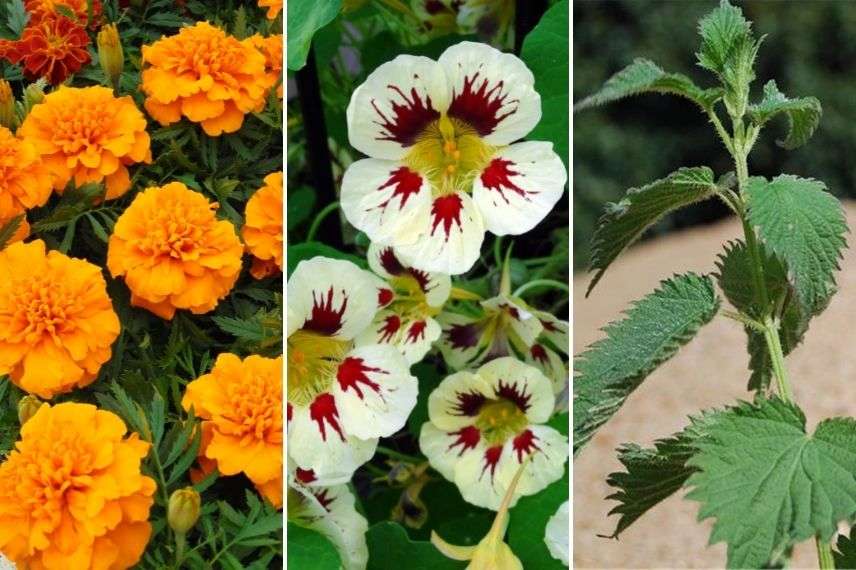
Marigold, nasturtium, and nettle.
Taking care of soil life in the greenhouse
Microorganisms, small animals, and insects, such as pillbugs or earthworms, are naturally present in healthy soils. This soil life promotes plant development and makes them stronger against pest attacks and diseases.
To maintain living soil in the greenhouse, focus again on good aeration, effective watering, the addition of amendments, the cultivation of green manures, and the installation of mulching.
A fertile and well-balanced soil will also encourage natural predators of pests to come into the greenhouse.
If you have chosen to raise hens in your garden, take advantage of the end of the growing season in autumn-winter to let them roam in the greenhouse. They will delight in any pest within reach of their beak (caterpillars, snails, slugs, grey worms…) while aerating and fertilising the soil.
Finally, natural treatments based on manures (nettle, horsetail…) or naturally derived insecticides will always be preferred over chemical treatments, in order to best preserve soil life and the natural balance in the greenhouse.
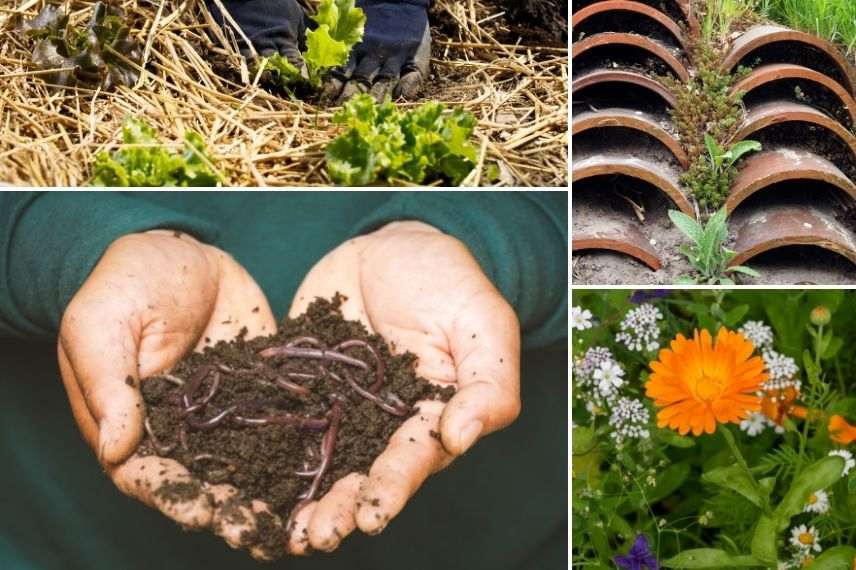
Good mulching, compost addition, insect shelters, and melliferous plants contribute to a healthy ecosystem in the greenhouse.
- Subscribe!
- Contents
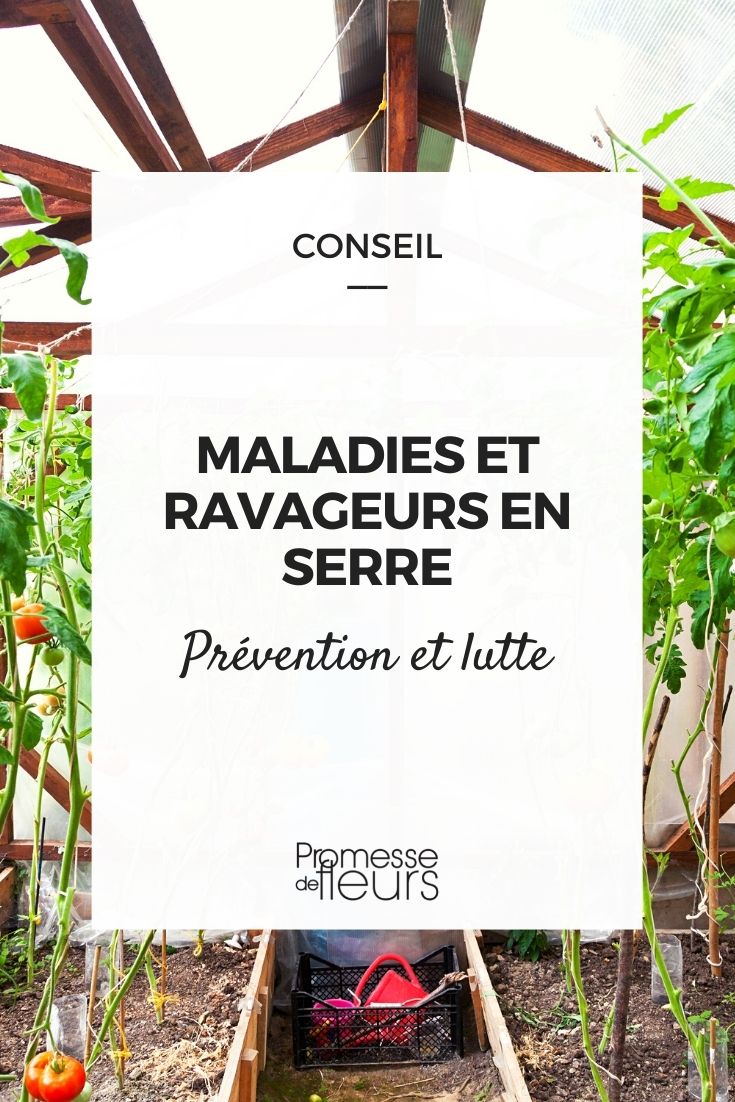































Comments